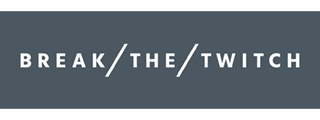
He was a jack of all trades and a master of none, but sometimes better than a master of one.
If I’d been around when that saying was coined, I’m pretty sure it would’ve been talking about me. Especially early in my career, I’d spend six months doing one thing, a year doing another thing.
Having more experience and a greater understanding of myself has helped me understand that some of those more frequent changes might have been a bit of a Twitch.
I’d get bored with one thing, see a shiny new object somewhere else, and go for it. I’d feel discomfort with the boredom and monotony and feel the need for something new to pursue.
If this sounds at all familiar to you, you’ve probably heard the same things I’ve heard throughout my life. Things like, “you should probably find something you can stick with,” or “find one area to focus on that you can do really well.”
In a lot of ways, that’s not bad advice. Specialization works well for a lot of people and has its merits, too.
While I’ve always had many interests, when it comes to career, there have been just a few recurring themes over the last five years or so.
Right around when I started noticing these themes, I heard my friend Jeff Goins speak about what he calls the Portfolio Life.
I gave him a call to learn more about it and ended up visiting him in Nashville for a more in-depth discussion. We took a deep dive into the idea of living a Portfolio Life, and what it could look like across the board.
The video above highlights my conversation with Jeff, and we’re releasing the full 55-minute interview (with additional examples and context) for Break the Twitch members.
Now, let’s get into some of the questions I asked Jeff.
What are the basics of living a Portfolio Life?
Living a Portfolio Life means you have multiple interests and can apply them in a variety of fields and contexts. We’re all Portfolio people, whether we realize it or not. After all, your life is made up of a portfolio of activities, all of which make you who you are.
Being a Portfolio person is also increasingly becoming more common and more of a necessity. When Charles Handy first coined the phrase “portfolio worker” in 1989, he predicted we’d have careers that would be made up of multiple jobs every 5 to 10 years in the future. In fact, Forbes has predicted by 2030, over half of the American workforce will be freelance. More and more jobs are also being taken over by computers. If you take two or three seemingly disparate skillsets and combine them into a new thing, it’ll be much harder for a computer to replace what you offer.
How do I figure out what’s in my portfolio?
It’s important not to start out thinking you know exactly what’s in your portfolio. Part of figuring out the portfolio is you don’t know how it’s going to turn out.
Clarity comes with action. You’re either going to start really narrow and expand over time or you’re going to start really broad and figure out how to rein it in. If you keep investing in the right interests, something is going to emerge called your body of work. You won’t fully understand what the mosaic looks like until you get to the end of a season or the end of life when you see how all the pieces fit together.
How do you know whether to keep working on something or to let go of it?
The best thing we can do is continue to be curious and to pay attention to the things we like. One of the most dangerous things for us to do is to settle too quickly on the thing you think it is. We may need to let go of something we’ve gotten a lot of attention for because there’s something else that’s a better fit.
At the same time, we also need to be careful to not abandon something too quickly. The way we tap into our genius is to dance with it—balancing between knowing what it is and also knowing that you don’t know what it is.
What else is helpful when it comes to building a Portfolio Life?
Part of being a Portfolio person is being in a community of other people who are also living a Portfolio life. Sharing and learning from others in a like-minded group can elevate us. It’s important to have those different relationships in your life to help you make those hard decisions on when to add something, let something go, or stick with something.
Remember that clarity comes with action, so don’t wait to find out what your Portfolio Life looks like. Also be careful not to fall in love with any one piece of the process, because it’s all part of the process. The only way we get to create our body of work is by continuing to work, create new things, and chase curiosity our whole lives—never assuming that we have it figured out. And at the end, you’ll step back and look upon the mosaic of your life, which is your portfolio.
After talking to Jeff, it was abundantly clear there’s a benefit to being a master of some.
The key is finding a few core themes to focus on and become your body of work. If you’re interested in building a Portfolio Life, Jeff shares more examples and how he’s applied the Portfolio Life for himself in the full interview video.
I’m super grateful to Jeff Goins for sharing his experience and wisdom on building a Portfolio Life. He does amazing work as a bestselling author, keynote speaker, business coach and more.
Make sure to check out his work over at Goinswriter.com.
